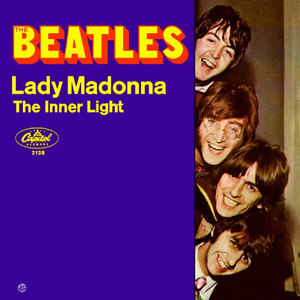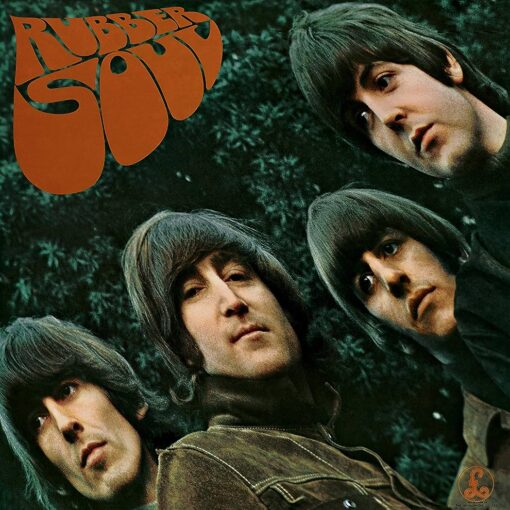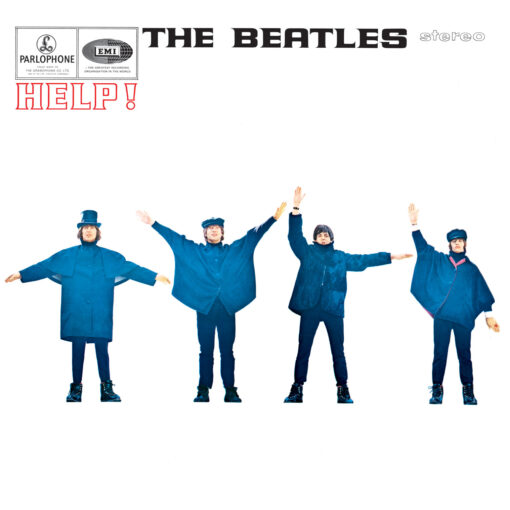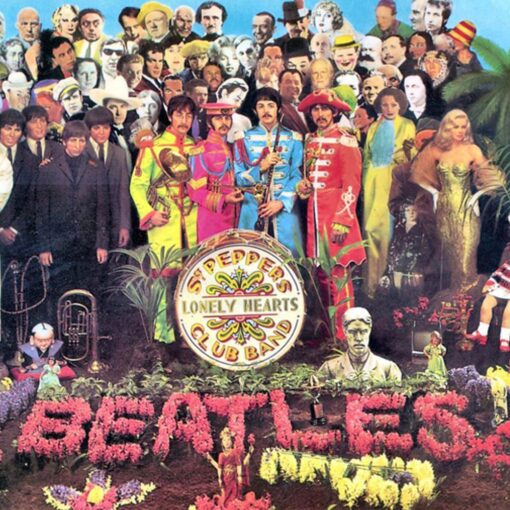- Published in 1968
- Author: Lennon/McCartney
- Track 12 on “The Beatles 1967-1970” (Blue Album)
- Track 5 on “Past Masters Volume 2“
RINGO 1968: “It sounds like Elvis, doesn’t it? No, it doesn’t sound like Elvis… it IS Elvis. Even those bits where he goes very high.”
JOHN 1980: “Paul. Good piano lick, but the song never really went anywhere. Maybe I helped him on some of the lyrics.”
PAUL 1986: “‘Lady Madonna’ is all women. How do they do it? –bless ’em. Baby at your breast, how do they get the time to feed them? Where do they get the money? How do you do this thing that women do?”
PAUL circa-1994: “The original concept was the Virgin Mary, but it quickly became symbolic of every woman– the Madonna image but as applied to ordinary working-class women. ‘Lady Madonna’ was me sitting down at the piano trying to write a bluesy boogie-woogie thing. It reminded me of Fats Domino for some reason, so I started singing a Fats Domino impression. It took my voice to a very odd place.”
About “Lady Madonna”

“Lady Madonna” stands as a testament to the collaborative genius of Paul McCartney and John Lennon, officially credited under the iconic Lennon-McCartney duo. This spirited rock and roll anthem was born in the recording studio on February 3 and 6, 1968, just before the Beatles embarked on their transformative journey to India. Departing from their earlier psychedelic experiments, the song’s lively boogie-woogie style marked a return to a more conventional approach to composition and recording.
Upon its release in March 1968, a mono version of the single, coupled with “The Inner Light,” graced the airwaves. Debuting at number 23 on the Billboard Hot 100 in the UK, it swiftly climbed to the fourth position, holding steady for two consecutive weeks. This marked the end of an era, as it was the Beatles’ final offering through Parlophone Records, setting the stage for their subsequent releases under the Apple Records label.
In the broader context of 1968, “Lady Madonna” was a harbinger of a broader trend in the music industry. The Beatles’ shift back to more traditional songwriting resonated with artists worldwide, echoing a collective return to musical fundamentals.
The inception of “Lady Madonna”‘ was timely. Paul McCartney shared an early rendition on a piano during a visit to his Scottish farm in December 1967, a moment that would go down in music history. This was an era when the British press began championing a “rock-and-roll revival” as a counterbalance to the excesses of psychedelia.
One intriguing facet of “Lady Madonna” is its musical lineage. McCartney borrowed from Humphrey Lyttelton’s ‘Bad Penny Blues,’ originally released in 1956 on the Parlophone label under George Martin’s stewardship, the same producer behind the Beatles. This act of creative adaptation was a nod to the rich tapestry of musical history.
In lyrical content, “Lady Madonna”mirrors Fats Domino’s 1956 hit, “Blue Monday,” depicting the toils and tribulations of everyday life from a working woman’s perspective. John Lennon’s lyrical contribution masterfully captures the struggles faced by a mother, navigating the challenges of overwork, exhaustion, and the relentless demands of daily life, possibly as a single parent.
In its entirety, “Lady Madonna”‘ encapsulates a potent blend of musical innovation, collaborative brilliance, and a keen insight into the human condition, ensuring its enduring resonance through the ages.
Meaning of “Lady Madonna”
“Lady Madonna” is a song that pays homage to the strength and resilience of working-class mothers. The lyrics portray a woman who is facing the challenges and demands of everyday life with determination and grace. The term “Lady Madonna” is a blend of “Lady” (a term of respect) and “Madonna” (Italian for “My Lady”). This title likens the woman in the song to the Virgin Mary, a symbol of maternal strength and devotion in Christian tradition. This comparison is meant to highlight the woman’s selflessness and the sacrificial nature of her efforts.
At the time the song was written and released, The Beatles were experiencing unprecedented fame and fortune. The contrast between their extravagant lifestyle and the struggles of the woman in the song serves to emphasize the admiration and respect they have for her. While the song was likely inspired by specific individuals or experiences, its theme is universal. It speaks to the strength and dedication of mothers worldwide, acknowledging the often-overlooked role they play in the lives of their families and communities.
Additionally, “Lady Madonna” can be seen as a social commentary on the challenges faced by working-class families, particularly mothers, in the midst of their daily grind. It acknowledges the difficulties and pressures they endure while maintaining a sense of responsibility and love for their families.
In conclusion, “Lady Madonna” is a tribute to the unsung heroism of everyday mothers. It celebrates their fortitude, selflessness, and the profound impact they have on the lives of those around them.
Personnel
The Beatles
- Paul McCartney – lead vocal, piano, bass guitar, handclaps
- John Lennon – backing vocal, lead guitar, handclaps
- George Harrison – backing vocal, lead guitar, handclaps
- Ringo Starr – drums, drums (with brushes), handclaps
Additional musicians and production
- Ronnie Scott – tenor saxophone
- Bill Povey – tenor saxophone
- Harry Klein – baritone saxophone
- Bill Jackman – baritone saxophone
- George Martin – production
- Ken Scott – engineering
- Geoff Emerick – engineering



